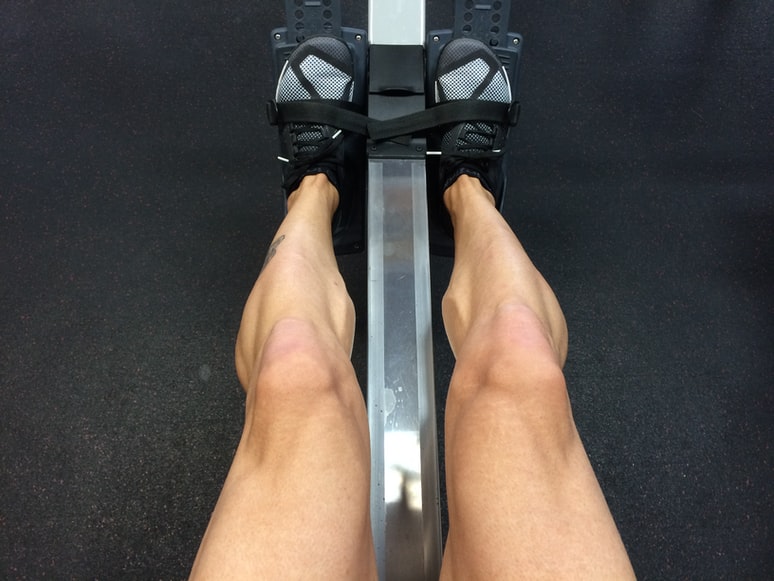The Rowing machine is exactly as its name suggests, a machine that imitates the workout provided while rowing a boat in water. The Rowing machine has become rather popular in today’s fitness regimes because it is simple enough to understand but still a hard and very efficient exercise. But to better understand the workout it is important to know about the different stages of the workout and the different rowing machine muscles involved in each of those stages.
1)The Catch
The Catch is the starting position of the workout. The rower keeps his/her knee bent, shoulders and back relaxed while keeping the arms outstretched over the knee. In this position you triceps are stretched along with a group of shoulder muscles, called anterior deltoids and chest muscles. Although the rowing muscles do not face much resistance in this position, the stretching is still beneficial. It is important to make sure that your shoulders are not hunched and that your back is straight.

2) The Drive
While rowing, the Drive is the move that works to propel your boat forward. Which means it usually needs the most exertion. You push down with your legs straightening your knees while pulling the handle of the machine towards your sternum. Your quads, hamstrings and glutes all come into play during this push. The pulling of the handles relies on your biceps mainly but also helps engage your core and upper back muscles. It is important to do this stage slowly emphasizing the upper body muscles and your legs rather than your lower back. Pulling at the handle too fast causes the pressure to be applied on the lower back or abdominal region and may cause back pains.
3) The Finish
This stage is basically the conclusion of the Drive and is called the Finish.In this position the arms are in a state of tension, holding the handle to the sternum while the legs are outstretched and the torso leans slightly to the back. At this stage the rowing muscle are contracting. The biceps and back muscles help keep the torso firm and rotates the upper arms internally. Make sure that you do not just lean back and let your body weight take over. Keep your back firm and your muscles tensed to get the full benefit of the position.
4) The Recovery
The Recovery is the final stage which returns the rower to the initial position. The arms are brought down to the hips and then stretched out. The knees bent and the user returns to the Catch position. The hamstrings contract and the abdominal muscles flex as you bring your torso forward.
On the upper body, the triceps are engaged when stretching out the arm.
When recovering it is important to bring the handle down to the hips from the sternum before stretching our arms forward. This is done to emulate the same motion in a real boat where the hand come down to the hip in order to lift the oars out of the water.
